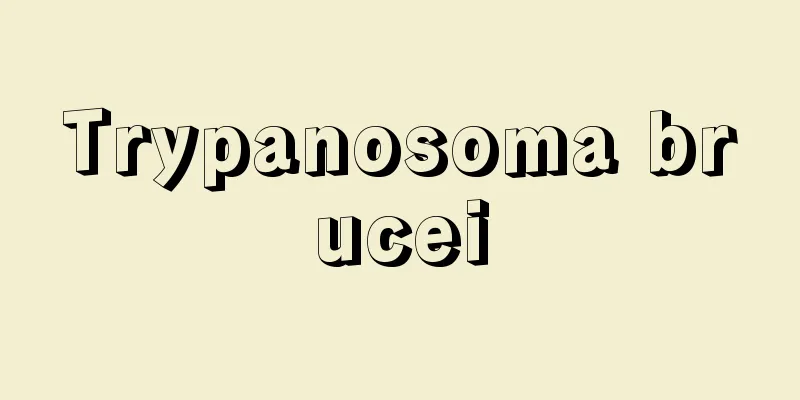Whooping cough - pertussis

|
It is an acute infectious disease of the respiratory tract (trachea and bronchi) caused by the pertussis bacteria, and is classified as a Class 5 infectious disease (pediatric fixed point surveillance) under the Infectious Disease Prevention and Medical Care Act (Infectious Diseases Act). It is transmitted (droplet infection) by exposure to the patient's cough. It is highly contagious, and if there is no immunity, there is almost a 100% chance of developing the disease. The majority of patients are infants under the age of three, and since they do not inherit immunity from their mothers, even newborns can become infected, with most deaths occurring under the age of one. Whooping cough is characterized by attacks of explosive, intermittent spasmodic coughing (staccato) called spasmodic coughing, a violent inspiratory whooping sound (whoop) at the end of the attack and repetition of these sounds (repriese), and the patient being energetic and otherwise healthy apart from these attacks. Parapertussis, caused by Bordetella parapertussis, a disease related to Bordetella pertussis, is milder than whooping cough, has a shorter course, and occurs less frequently, but it is sometimes referred to as whooping cough syndrome clinically because it is difficult to distinguish between the two. [Noriaki Yanagishita] SymptomsThe incubation period is usually one to two weeks, and the disease stages are broadly divided into the normal, catarrhal, paroxysmal, and convalescent stages. (1) Catarrhal stage: This stage begins in the first 1-2 weeks of the disease and resembles the common cold, with the main symptoms being a dry cough, runny nose, and hoarseness, but the cough does not subside even when antitussives are administered. In the case of the common cold, even when the patient is recovering, the cough tends to be severe and intermittent, especially during sleep at night. (2) Paroxysmal coughing stage This is the so-called paroxysmal stage, which lasts for 2 to 6 weeks following the catarrhal stage. The coughing paroxysms characteristic of whooping cough appear. In other words, before the patient has time to inhale, a dozen or so small, violent coughs occur in succession, followed by a peculiar whooshing sound before breathing in. This is what is commonly referred to as "pulling inwards." After repeating this type of coughing several to a dozen times, the patient coughs up sticky, transparent phlegm, and the paroxysm ends. During the paroxysm, which usually lasts for 2 to 3 minutes, the patient's face turns red, the tongue is stuck out as the patient coughs, and tears and nasal discharge also occur. If a paroxysm occurs in the middle of the night, the patient will raise the upper body and lean forward in pain. The patient may vomit, or the lips may sometimes turn purple (cyanosis), and in infants, the paroxysms do not recede inwards, but may stop breathing or experience convulsions, leading to anoxic encephalopathy and serious complications. However, as mentioned above, the time between paroxysms is the same as when the patient is normally healthy. These attacks are likely to occur due to mental excitement or food intake, and can occur 10 to several dozen times a day. They occur particularly frequently within 1-2 hours of falling asleep, leading to lack of sleep and loss of appetite, wasting physical strength, and leaving the face swollen (whooping cough facies). The coughing attacks are most severe during the first 2-3 weeks of the paroxysmal coughing period, after which the intensity and frequency of the attacks gradually decrease. (3) Recovery phase: This phase lasts for 2 to 3 weeks following the paroxysmal coughing phase; sometimes mild attacks may occur, but the cough gradually returns to normal and the patient recovers. Furthermore, the transition periods for each stage are not clearly defined, and symptoms vary depending on the patient's age and whether or not they have immunity. [Noriaki Yanagishita] TreatmentAntibiotics such as erythromycin are used in the early catarrhal stage to suppress bacterial excretion, but this is not expected to be effective in alleviating symptoms during the spasmodic coughing stage. However, it is useful for preventing complications due to secondary infections such as pneumonia during the spasmodic coughing stage, and for preventing the onset of symptoms in people who have come into contact with the infected person and have cold-like symptoms. In addition, adrenal cortical hormones are used as a life-saving measure for infants with severe spasmodic coughing, and intravenous gamma globulin preparations are also used to alleviate symptoms by neutralizing toxins. On the other hand, general treatment is often overlooked, but is extremely important in nursing care. That is, provide fluids and a balanced diet in small amounts frequently without forcing the patient, and remove stimuli that induce coughing, such as cold air, cigarette smoke, dry foods that easily turn to powder, and anxiety about coughing. [Noriaki Yanagishita] ImmunityOnce you have had the virus, you will be immune for life. Since there is no immunity from the mother, newborns can also become infected. [Noriaki Yanagishita] preventionA sick child is highly contagious in the early stages of the disease, and can transmit the virus for up to eight weeks after the onset of the disease, so sick children should be kept away from other family members, especially infants. In addition, this is a Class 2 school infectious disease under the School Health and Safety Act, and children will be suspended from attending school until the characteristic cough has subsided. [Noriaki Yanagishita] vaccinationSince 1981, the "Adsorbed Purified Pertussis Diphtheria Tetanus Combined Vaccine (Improved DPT Triple Combined)" has been used for routine vaccinations. For pertussis, it is administered in two stages: Stage I is administered subcutaneously three times at 3-8 week intervals between 3 and 90 months of age (the standard vaccination period is 3-12 months), and Stage II is administered subcutaneously once (0.5 milliliters each time) between 12 and 18 months of age after completion of Stage I. Infants are more likely to become seriously ill, so it is advisable to vaccinate them early during epidemic periods. Even if vaccination cannot be administered at the scheduled intervals, immunity will be guaranteed if the prescribed number of vaccinations are administered. The conventional triple vaccine was temporarily suspended in 1975 when side effects of the "pertussis vaccine" became an issue, and was then resumed when the "improved pertussis vaccine" was developed in 1981. Following this suspension of vaccination, the vaccination rate dropped, and the number of infants without immunity increased due to the raising of the age for mass vaccination, and the number of pertussis patients increased again to the level before the vaccination with the "pertussis vaccine", but after resumption of vaccination, the trend began to decline. [Noriaki Yanagishita] Bordetella pertussisBordetella pertussis , the whooping cough pathogen, was first isolated in France in 1906 and is also known as Bordet-Gengou bacillus after the researcher who successfully isolated it. It is a gram-negative, aerobic, ovoid rod with a long diameter of about 1 micrometer, and when stained with toluidine blue, darkly stained bodies are seen at both ends of the body. It is easily killed by drying or ordinary disinfectants, and is also killed by heating at 55.5°C. It is detected in large numbers in the respiratory tract mucosa during the catarrhal stage. The related bacterium B. parapertussis is the pathogen of parapertussis, and while Bordet-Gengou medium is used for the growth of B. pertussis, B. parapertussis grows well on normal agar medium. [Noriaki Yanagishita] Subsequent developmentsAs mentioned above, the number of whooping cough patients has been decreasing since the current DPT vaccine was introduced in 1981, but in recent years, the number of cases has been increasing, especially among adults, as seen in the large-scale outbreaks of whooping cough at universities and other institutions in 2007. One of the reasons for this is thought to be the reduced effectiveness of past vaccines, and new countermeasures are needed. [Editorial Department] [Reference items] | | | |Source: Shogakukan Encyclopedia Nipponica About Encyclopedia Nipponica Information | Legend |
|
百日咳菌による気道(気管・気管支)の急性伝染病で、感染症予防・医療法(感染症法)で5類感染症(小児科定点把握)に分類されている。患者の咳を浴びることによって感染(飛沫(ひまつ)感染)する。伝染力が強く、免疫がなければほとんど100%発症する。患者の過半数は3歳未満の乳幼児で、母親からの免疫を受け継がないので、新生児でもかかることがあり、死亡例は1歳未満に集中する。百日咳の特徴は、痙咳(けいがい)とよばれる爆発的で断続するけいれん性の咳(スタッカートstaccato)と、その終了時にみられる激しい吸気性笛声(フープwhoop)およびこれらの反復(レプリーゼrepriese)からなる発作と、この発作時以外は元気で健康時と変わらないことである。 なお、百日咳菌と類縁のパラ百日咳菌によるパラ百日咳は、百日咳よりも軽症で経過が短く発症頻度も少ないが、臨床的には区別しがたく一括して百日咳症候群とよぶこともある。 [柳下徳雄] 症状潜伏期は通常1~2週間で、病期は普通、カタル期、痙咳期、回復期に大別される。 (1)カタル期 病初の1~2週間で、痰(たん)の出ない咳、鼻汁、かれ声などを主症状とする普通感冒に似た型で始まるが、鎮咳剤を与えても咳が軽くならない。普通感冒なら回復に向かうころになっても咳が強く間欠的な偏りをみせ、とくに夜間の就眠中に多くなる傾向がみられる。 (2)痙咳期 いわゆる発作期で、カタル期に続く2~6週間をさす。前述の百日咳に特有な咳の発作が現れる。すなわち、息を吸う間もなく小さな激しい咳が十数回も続発し、そのあとヒューッと特異な笛声を出して息を吸う。俗に「内(うち)へ引く」というのがこれである。このような咳を数回から十数回繰り返したのち、粘っこい透明な痰を喀出(かくしゅつ)して1回の発作が終わる。普通2~3分間であるが、発作中は顔が赤くなり、舌を出して咳をし、涙や鼻汁も出る。夜中に発作がおこると、上半身を起こして前かがみになり苦しむ。嘔吐(おうと)したり、ときには唇が紫色になる(チアノーゼ)ほか、乳児では内に引くことがなく、呼吸停止やけいれんをおこして無酸素性脳症を合併し、重篤となることもある。しかし、前述のように発作と発作の間は、普段の健康時と変わらない。 この発作は、精神的な興奮や食物摂取などをきっかけとしておこりやすく、1日に10回から数十回に及ぶ。ことに就眠後1~2時間に頻発するので、睡眠不足や食欲減退を招き、体力を消耗するほか、はれぼったい顔つき(百日咳顔貌(がんぼう))となる。なお、咳の発作の激しいのは痙咳期の初めの2~3週間で、あとは激しさも回数もしだいに減少してくる。 (3)回復期 痙咳期に続く2~3週間で、ときに軽い発作がみられることもあるが、しだいに普通の咳に戻り、回復してくる。 なお、各期の移行期は明確でなく、症状も患者の年齢や免疫の有無などによって異なる。 [柳下徳雄] 治療カタル期の初期にエリスロマイシンなどの抗生物質を用いて排菌を抑制するが、痙咳期の症状寛解には効果を期待できない。しかし、痙咳期における肺炎など二次感染による合併症の予防や、感冒様症状を呈した接触感染者の発症予防には役だつ。また、痙咳期重症乳児の救命処置として副腎(ふくじん)皮質ホルモンが用いられ、毒素中和による症状軽減を目的として静脈注射用γ(ガンマ)‐グロブリン製剤も使われる。 一方、一般療法は軽視されがちであるが、看護上きわめて重要である。すなわち、水分やバランスのとれた食事を無理なく少量ずつ頻回に与え、咳を誘発させるような刺激、たとえば冷気、たばこの煙、乾燥食品で粉末になりやすいもの、咳に対する不安感などを除去する。 [柳下徳雄] 免疫一度かかれば終生免疫となる。母体から免疫を受けないので新生児にも感染する。 [柳下徳雄] 予防患児からの伝染力は発病初期に強く、発病後8週間くらいは感染させる可能性があるので、患児は家庭内で他の家族と病床を離し、とくに乳幼児を近づけないようにする。なお、学校保健安全法による第2種学校感染症であり、特有の咳が消失するまで出席停止の扱いを受ける。 [柳下徳雄] 予防接種1981年(昭和56)以来「沈降精製百日せきジフテリア破傷風混合ワクチン(改良DPT三混)」が定期接種に用いられている。百日咳に対しては2期に分けて実施され、第Ⅰ期は生後3か月から90か月(標準的な接種時期は3~12か月)の間に3~8週間隔で3回皮下注射し、第Ⅱ期は第Ⅰ期の完了後12~18か月の間に1回皮下注射(各回0.5ミリリットルずつ)する。 乳児では重症となりやすいので、流行期には早めに接種することが望まれる。予定どおりの間隔で接種が行えなくても、定められた回数の接種を行えば免疫効果は確保される。 なお、従来の三混ワクチンは1975年(昭和50)に「百日せきワクチン」の副作用が問題になって一時中止され、その後1981年に「改良百日せきワクチン」ができてから再開された。この接種の一時中止に伴い、予防接種率が低下し、集団接種の年齢引上げなどから免疫のない乳幼児が増加するとともに百日咳患者数が「百日せきワクチン」の接種以前までふたたび増加してきたが、再開に伴い減少傾向をみた。 [柳下徳雄] 百日咳菌1906年にフランスで初めて分離された百日咳の病原菌Bordetella pertussisで、分離に成功した研究者の名を冠してボルデー‐ジャングー菌Bordet-Gengou bacillusともよばれる。グラム陰性、好気性の長径約1マイクロメートルの卵形桿菌(かんきん)で、トルイジンブルーの染色により菌体両端に濃染する小体が認められる。乾燥および普通の消毒薬で容易に死滅し、また55.5℃の加熱でも殺菌される。カタル期の気道粘膜に多数検出される。なお、類縁菌のパラ百日咳菌B. parapertussisはパラ百日咳の病原菌で、百日咳菌の発育にはボルデー‐ジャングー培地を使うのに対し、パラ百日咳菌は普通寒天培地によく発育する。 [柳下徳雄] その後の動向前述したように、1981年(昭和56)に現行の三種混合ワクチン(DPT)が導入されてから百日咳の患者数は減少したが、2007年(平成19)に大学等で大規模な百日咳の集団感染が発生するなど、近年、成人を中心に増加傾向にある。過去に受けたワクチン効果の低下が原因の一つと考えられており、新たな対策が求められている。 [編集部] [参照項目] | | | |出典 小学館 日本大百科全書(ニッポニカ)日本大百科全書(ニッポニカ)について 情報 | 凡例 |
<<: Zinnia elegans (Zinnia) - Zinnia elegans (English spelling) youth‐and‐old‐age
>>: One hundred times pilgrimage - Hyakudo Mairi
Recommend
Vapcarov, NJ (English spelling) VapcarovNJ
… The period between the two world wars was marke...
Blood clot - blood clot
…The clots formed by blood clotting in this way a...
Ukuji
A powerful clan in the Middle Ages based in Ukushi...
Carthamin
C 43 H 42 O 22 (910.77). The petals of Carthamus ...
Echo - Yamabiko
Sound reflected back from mountains and valleys. ...
selenium
Se. Atomic number 34. Electron configuration [Ar]...
Focal emphysema
Emphysema is classified into three types based on...
Quantum number - ryoushisuu (English spelling) quantum number
In quantum mechanics, physical quantities often h...
Mahāyāna-śāmahayāna
A Buddhist book. A representative work by Asanga,...
Circle-restricted three-body problem
...The equations of motion are of the sixth order...
Varicose veins
What is the disease? Many of the veins on the sur...
Functional School
Functional school is a school of thought that seek...
Ichi no Shonin
⇒Kuuya Source: Kodansha Digital Japanese Name Dict...
Oze Pass
…It is located in the northeast of Gunma Prefectu...
Lane, EW (English spelling)
...It seems to have been written by many authors,...








![Carlo [VII] - Carlo](/upload/images/67d029ac7723f.webp)
